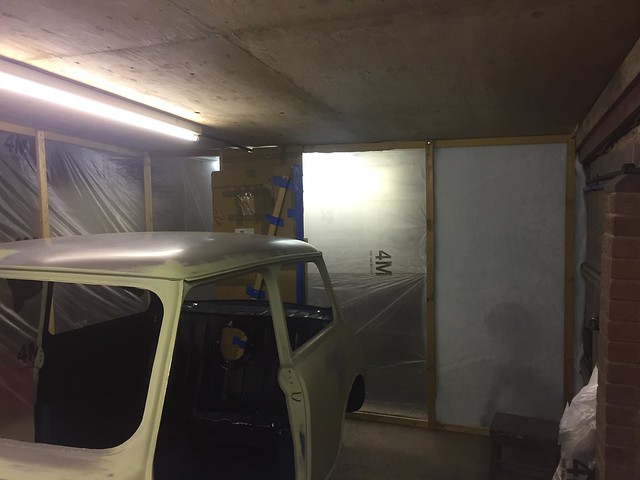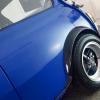
Paint Fumes
#1

Posted 14 May 2018 - 07:56 PM
What I'm more concerned with is the fumes that it will generate. I'm looking at getting an Apollo 1500 hvlp set up, which should keep the overspray down.
One of my neighbor's sprays and he gets complaints about the fumes. So, what I'm thinking is, if I make a temporary sealed booth using pvc sheets like used in tent windows and also put a carbon filter in line with the extractor fan (explosion proof), that the booth should keep the fumes contained while the extraction and filter does its job.
I'm also getting an air fed mask as well, which I intend to feed from a Martindale turbine to avoid the horrible compressor fumes!
Does this sound like it might work?
#2

Posted 14 May 2018 - 08:14 PM
In an industrial application, the extraction stack has to extend at least 3 feet above the highest point of the buildings roof. I don't know where you would stand with extracting it out low
A carbon filter may filter the fumes you are extracting but I'm not sure if it will stop the smell. This is what people will complain about.
The other thing you need to consider with extraction is clearance time and the rate in which the mist will extract. If you are spraying in a tight space, the room will very quickly fill with mist and if your extractor can't keep up with it, then you won't be able to see a thing and all of the paint mist will settle on your wet paint and spoil the finish.
What paint do you intend to use?
#3

Posted 14 May 2018 - 08:25 PM
#4

Posted 14 May 2018 - 08:42 PM
#5

Posted 14 May 2018 - 08:44 PM
#6

Posted 14 May 2018 - 09:11 PM
It has worked pretty well but I use a 300mm fume extractor blowing into the booth which clears fumes reasonably well.
 IMG_2169 by darren carr, on Flickr
IMG_2169 by darren carr, on Flickr
#7

Posted 15 May 2018 - 07:11 AM
I was thinking of placing one of these inside the enclosure and wrapping it in booth filter material to stop it blocking up too quickly with overspray.
https://www.growell....on-filters.html
Edited by Mito, 15 May 2018 - 07:12 AM.
#8

Posted 15 May 2018 - 09:06 AM
#9

Posted 16 May 2018 - 04:36 PM
Cellulose is the only way to go if you are spraying at home. Has to be the safest method for everyone.
#10

Posted 16 May 2018 - 04:53 PM
Cellulose is the only way to go if you are spraying at home. Has to be the safest method for everyone.
I'm considering giving the local EA a call to seek their advice on this as there doesn't appear to be a consensus on this and all I can find in terms of official documents is pretty much covered below. All it suggests is ensuring adequate ventilation which suggests that once it is dispersed in open air there is limited risk. Plus, smart repairers are allowed to spray in open air.
http://www.hse.gov.u...isocyanates.htm
I'm trying to avoid a debate on whether or not it is safe to spray 2k at home ![]() and keep this more to containing and filtering any overspray and other fumes as far as is possible.
and keep this more to containing and filtering any overspray and other fumes as far as is possible.
#11

Posted 16 May 2018 - 05:16 PM
#12

Posted 16 May 2018 - 05:23 PM
Other option is to find a friendly garage with a booth that might let you spray.
Unfortunately I don't know of any and the only one which I have found that offers to hire out it's booth etc is based down south! ![]() This would have been my preferred option though.
This would have been my preferred option though. ![]()
#13

Posted 16 May 2018 - 05:53 PM
In a month it will be light enough to spray a section a day at 4.30 AM when every one will be asleep,
#14

Posted 16 May 2018 - 06:49 PM
until the noise from the turbines/compressor wakes them upIn a month it will be light enough to spray a section a day at 4.30 AM when every one will be asleep,
Edited by Mito, 16 May 2018 - 06:50 PM.
#15

Posted 16 May 2018 - 08:40 PM
http://www.hse.gov.u...rrpdf/rr496.pdf
The conclusion indicates that using a combination of paint stopper filters and eu5/f5 filters, removes 94-98% of the isocyanate from the exhaust air. RPE is still a requirement during spraying and gun cleaning.
1 user(s) are reading this topic
0 members, 1 guests, 0 anonymous users















